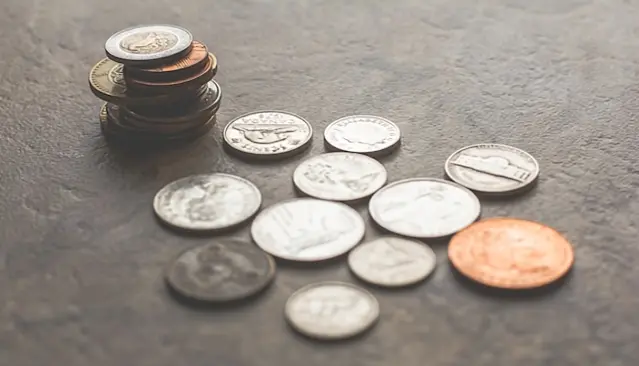Saving money is one of the most important things you can do for your financial future. But how much of your paycheck should you be setting aside each month? This blog post will answer that question and discuss the importance of establishing a savings plan.
We will explore the best strategies for determining what percentage of your check you should save and how to create a plan that fits your financial goals.
The 30 percent rule
If you’re looking for an easy way to figure out what percentage of your check you should save, the 30 percent rule is a good starting point. This rule recommends allocating 30% of your income to savings and debt repayment. This means that if your monthly income is $3,000, you should save $900.
This rule is helpful because it makes saving relatively simple. Simply divide 30% by your monthly income to determine how much you should save. You can also use this technique to figure out how much you should allocate toward debt repayment each month.
Also Read: The Pros and Cons of Investing vs Saving
If the 30% rule does not work for you, other ways may be more appropriate. However, if you want to get real about savings, this would be a wonderful place to start. What percentage of your pay should you save each month? The 50/30/20 rule is also another common strategy.
The idea is to divide your after-tax income into three categories: 50% for necessities, 30% for non-essentials, and 20% for financial goals such as debt repayment or saving. This plan ensures that you still have time for enjoyment while allocating enough money to save what percentage of your check each month.

The 50/30/20 Rule
This is a great budgeting approach for understanding how much money you should save from each paycheck. The rule suggests that you should allocate 50% of your income to needs, 30% to wants, and 20% to savings. When it comes to saving, the rule recommends that you set aside 20% of your check for savings.
This will ensure that you can save a good amount of money each month and build up your financial security. By following this rule, you can save for emergencies, retirement, and other important financial goals. It’s a simple yet effective way to start building a strong financial foundation.
But what percentage of your check should you save? Generally speaking, the recommended range is between 10 and 20%. If you’re just starting, 10-15% might be more reasonable until you become more comfortable with saving. Once you’re able to do that, gradually increase your savings rate to 20%.
The Debt Snowball Method
One popular way of saving money is the debt snowball method. This approach works best for those who are carrying any sort of debt. It’s a simple but effective way to reduce your debt and build up savings. The idea is to pay off your debts in order, from smallest balance to largest balance, regardless of interest rates.
As you pay off each obligation, the money you spend to pay it off can be allocated to the next one. The goal is to pay off all of your debts as soon as possible, freeing up more of your income for savings.
Also Read: How to Calculate Your Annual Income

So, what percentage of your check should you save with this method? It’s important to keep in mind that paying off your debt is your priority when using the Debt Snowball Method. You should allocate as much money as possible toward paying down your debt.
Also Read: How to Get Out of Debts Fast on Your Own
Once the debt has been paid off, the money that was being used for that can then be transferred over to savings. As a general rule of thumb, it’s recommended that at least 10% of your check be set aside for savings. However, if you want to get out of debt as quickly as possible, you may want to aim to save 20–30% of your check instead.
This larger amount will help you move through your list of debts more quickly. When deciding on what percentage of your check you should save, also consider other factors, such as having an emergency fund or a retirement account.
Although these expenses don’t have to be deducted right away, having them available can provide peace of mind during unexpected circumstances or for future security. Setting aside even just 5–10% of these funds will help you get closer to meeting these goals.
Also Read: Budgeting and Money Management
Additionally, once you’ve finished repaying your debt, continue setting aside at least 10% of your paycheck for savings, no matter what life throws at you. Not only will this help increase your nest egg for retirement or unexpected events, but it will also help you avoid falling back into debt later on.

The Envelope System
Here’s how it works: when you get paid, divide your income into a series of labeled envelopes (the number of envelopes is up to you). You can have envelopes labeled for rent, utilities, food, gas, entertainment, etc. Once you have divided your money into the envelopes, only spend out of the envelopes when making purchases.
When the money in a particular envelope runs out, that means you are done spending in that category until you get paid again. This will help you keep track of where your money is going and ensure that you stick to your budget.
But what percentage of your check should you save? It depends on your financial goals, but generally speaking, a good rule of thumb is to save 10-15% of each paycheck. If this seems like too much right away, start small by setting aside 5% of each paycheck and increasing as you go along.
Also Read: The Top 10 Most Frequently Asked Questions About Affiliate Marketing
Set aside money for emergencies or unforeseen needs as well; experts recommend keeping 3-6 months’ worth of living expenses on hand at all times. Saving may be difficult at first, but by taking little steps on each paycheck, you will surely meet your savings objectives and avoid living from paycheck to paycheck









